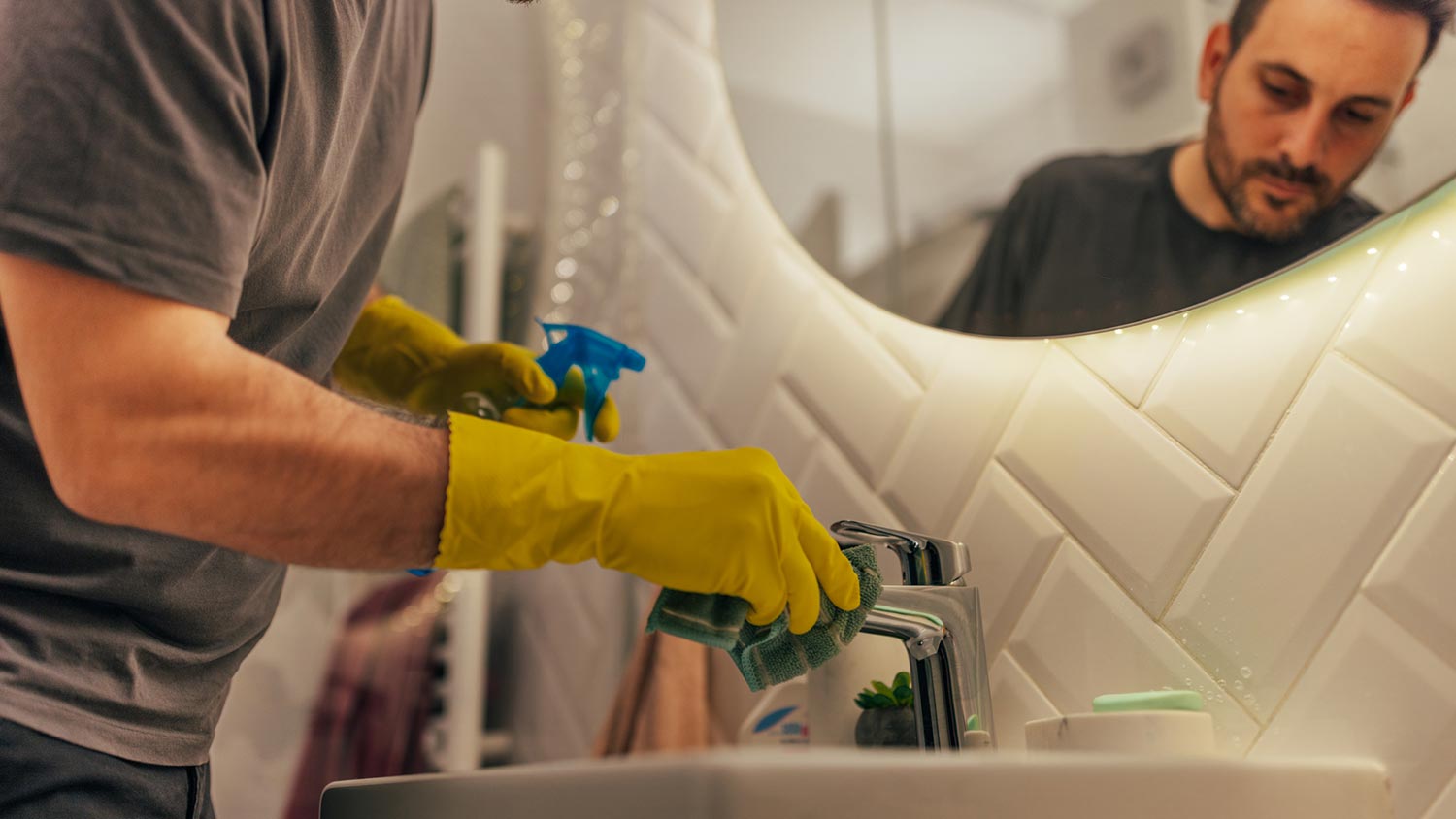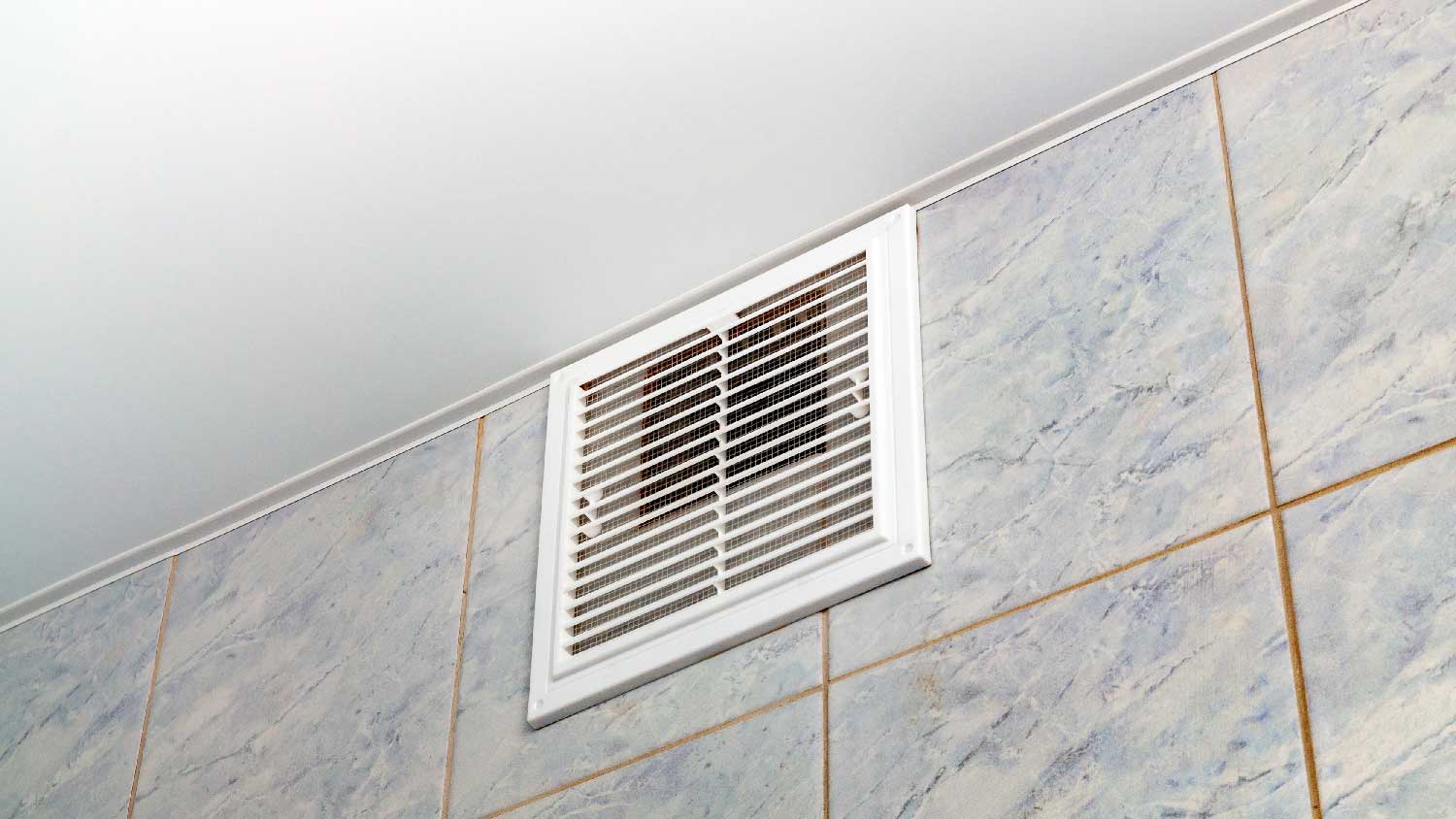
Mold remediation cost can quickly escalate. But if you have mold in your home, the cost for mold remediation is worth it.
Pink isn’t always pretty—especially when it’s growing in your bathroom


You’ll commonly find pink mold in bathrooms because it grows on moist surfaces.
It also thrives in humid environments and feeds on soap residue.
You can remove pink mold in your bathroom without a professional.
Get rid of pink mold with some common household ingredients.
If you’re uncomfortable with mold, you can hire a mold remediation pro.
Dealing with pink mold in your bathroom? This stubborn slime—which is actually bacteria, not mold—is commonly found in damp and humid environments and is why it often shows up in bathrooms. Fortunately, with a little elbow grease and a few habit changes, you can remove pink mold and make it less likely to return.
The bacteria that causes pink mold thrive on wet surfaces, including in and around toilets, on shower walls, and near drains. You might also notice this type of mold on your shower tiles, faucets, and shower curtains.
Of course, you can’t get rid of all the moisture in your bathroom (for example, your toilet bowl will always be wet). However, there are ways to remove pink mold and reduce the chances of it coming back, even in the wettest spots of your bathroom.

To get rid of pink mold in a shower or another moist area, follow these steps:
Put on rubber gloves, safety goggles, and clothes that cover most of your skin.
Turn on your exhaust fan and open any doors and windows in your bathroom.
Combine baking soda and dish soap in a 4-to-1 ratio in a small bucket.
Apply the mixture to the areas with pink mold using a scrub brush.
Rinse the scrub brush with hot water to remove any leftover mold.
Rinse the areas you scrubbed with a removable showerhead or clean water in another bucket.
Inspect the area again. If there’s any remaining pink mold, repeat the previous steps.
Remove the shower curtain and liner if you’re cleaning a shower and place them in the washing machine with bacteria-killing detergent. When done, hang them out to dry.
Use a commercial disinfectant spray or homemade mold-killing vinegar solution to clean the entire shower, toilet, sink, or whatever other area you’re cleaning. Let it sit for at least 10 minutes.
If there are any more pink mold spots, clean them with a scrub brush.
Rinse the entire area with hot water.
Dry the surface with a clean towel, cloth, or squeegee.
Rehang your shower curtain and liner if you washed them.
To limit moisture (and, potentially, pink mold) in your bathroom, dry your shower walls, doors, and bathtub after every use. If you have a shower curtain, close it after every shower.

Poor ventilation also promotes pink mold growth. If your bathroom doesn’t have an exhaust fan or windows, you might notice pink mold in different parts of the room.
Follow the steps listed above to clean pink mold from your bathroom surfaces. To reduce the chance of it returning, make sure to run your exhaust fan during and after your shower. Don’t have an exhaust fan? Leave a window or door open after showering.
Pink mold-causing bacteria feed on soap scum and shampoo residue, which is another reason you’re likely to find this type of mold in your bathroom. For this reason, you might also spot pink mold in your kitchen or laundry room.
Use the directions listed above to banish pink mold from your bathroom surfaces. To limit the amount of soap scum that bacteria can feed on, it’s best to clean your bathtub, shower, and sink at least once per week.
Whether it’s in your shower, sink, or toilet, getting rid of pink mold in a bathroom is fairly simple. You’ll just need to put on your safety gear and start scrubbing.
However, you can always call a professional if you don’t feel comfortable cleaning mold yourself or you aren’t sure which type you have. In those cases, a local mold testing and remediation pro can identify the type of mold and take the right steps to remove it.
From average costs to expert advice, get all the answers you need to get your job done.

Mold remediation cost can quickly escalate. But if you have mold in your home, the cost for mold remediation is worth it.

The cost of a mold inspection might seem high, but it’s one of the best investments you can make for your health and home. Read on to learn cost-saving tips.

If you found mold on window sills in your home, keep reading to learn how to remove the mold and avoid it from forming in the future.

Knowing when to get a mold inspection is important, especially if you live in a high-humidity area. Here’s how to decide whether or not to call a professional.

Mold can enter your air ducts and lead to poor indoor air quality. Use this guide to learn how to get rid of mold in air ducts for healthier air.

Learning how to remove mold from wood furniture is a worthwhile DIY project because you can save your expensive wood pieces. Learn more about safely removing mold from wood furniture.